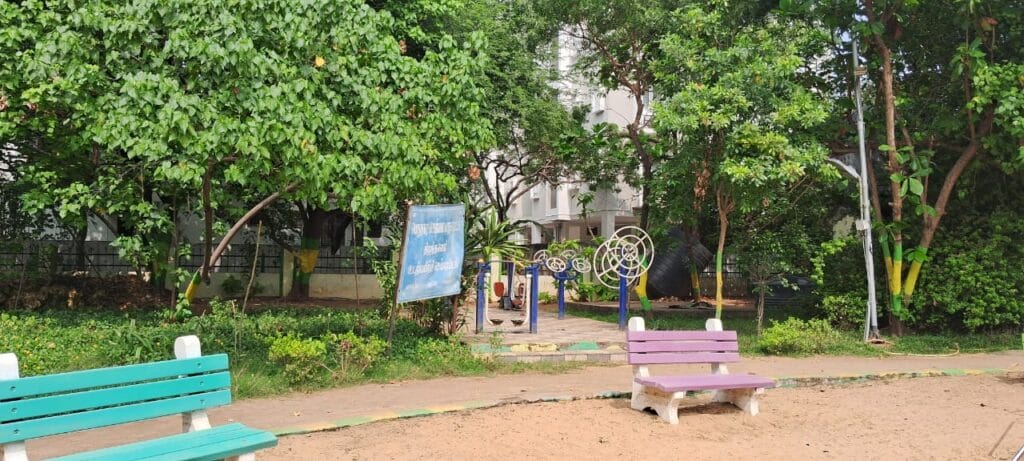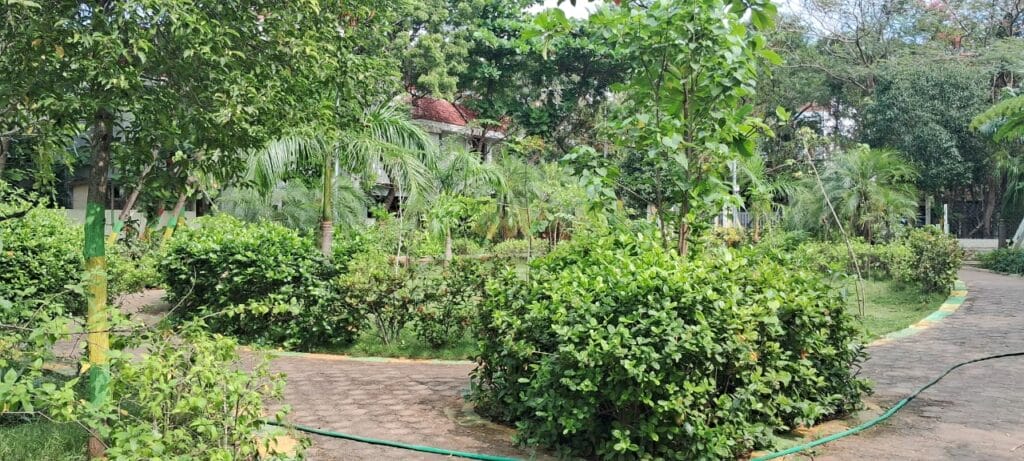As a teenager residing in Chennai, I observed a noticeable difference in the level of concern for safety between boys my age and myself, when in parks or outdoor spaces. While boys could play freely without feeling threatened, my own experiences were quite different. I would often be approached by unfamiliar men asking invasive questions, making me conscious of my vulnerability.
This seems to be a shared experience among girls, not only confined to parks but extending to various public spaces. It brings to light a gender disparity in outdoor experiences, emphasising the need to establish a more inclusive and welcoming atmosphere for individuals of all ages and genders.
According to the Greater Chennai Corporation (GCC), the city boasts over 830 public parks scattered across various locations. These parks are envisioned as communal sanctuaries catering to everyone, including families, children, and the elderly. Despite this vision, these spaces frequently fall short of delivering a secure and inclusive environment for countless women and girls.
As an urban planner with a strong focus on gender-inclusive design, I recognise the importance of addressing issues related to safety and inclusiveness. It is crucial to transform these parks into genuinely open public places that meet the diverse needs of the community.
Safety concerns in the public parks of Chennai

In their present form, public parks in the city primarily serve the needs of men, unintentionally fostering an environment that is not conducive to the inclusion and comfort of women. The resulting discrepancy is not solely indicative of prevailing societal beliefs but, is perpetuated by park designs that fail to address the requirements and security concerns of individuals of all genders.
Read more: Can women reclaim our streets? Gender-inclusive and safe public spaces a dream in Chennai
The existence of poorly lit areas, secluded walkways, and insufficient amenities tailored to the specific needs of women are factors contributing to this imbalance. The absence of gender-sensitive facilities like clean toilets or security booths, and the likelihood of harassment serve as deterrents for women, impeding their ability to participate freely in recreational activities in public parks.
Growing up in Chennai, I often observed the significant disparities in gender representation. Most women of all ages want to enjoy the serenity of parks and open spaces; they want to uninhibitedly sit, walk or play in spaces that do not make them feel intimidated. But, the diminished presence of women in these areas, especially after dark, indicates their feelings of exclusion and apprehensions over safety. In my conversations with local women, they expressed a profound and inherent desire for environments that provide them with a sense of safety and recognition.
Through the lens of gender-neutral design

The establishment of safer and gender-inclusive parks necessitates the adoption of a comprehensive approach to urban design and planning.
Here are some of the measures that can be incorporated in existing parks or while designing new public parks in future:
- Installation of adequate lighting across the parks
- Creation of open and visible spaces that deter possible perpetrators
- Availability of game fields that are gender-neutral
- Implementation of regular patrolling or community watch programmes
- Emergency call boxes that are easily accessible
- Well-maintained and secure toilet facilities.
Imagine a scenario in which most parks and open grounds in Chennai are adorned with luminous lighting, walkways are unobstructed and easily discernible, and women and girls are able to freely engage in various activities such as jumping, playing ball, running, lying down in the grass and other leisurely pursuits at any time of the day. Then, the parks will serve their true purpose not just as recreational areas, but also as representations of a city committed to the well-being of all its residents.
Read more: Only two play options for city kids: Unsafe parks or paid facilities
The significance of policy and community
Achieving this objective requires collaborative efforts from both the government and the community. Prioritising safe and inclusive spaces for people of all ages and genders should be at the core of urban planning initiatives. Active community engagement is crucial, as it enables meaningful participation of residents, especially women, in safety audits and the design process. Organising regular community events within these parks can foster the development of a shared sense of ownership and awareness among community members.
Promoting gender equality in urban life requires redefining public parks in Chennai as safe and inclusive spaces. As we strive for a more equitable urban future, creating public parks that foster an environment where women and girls can flourish without apprehension, is essential.